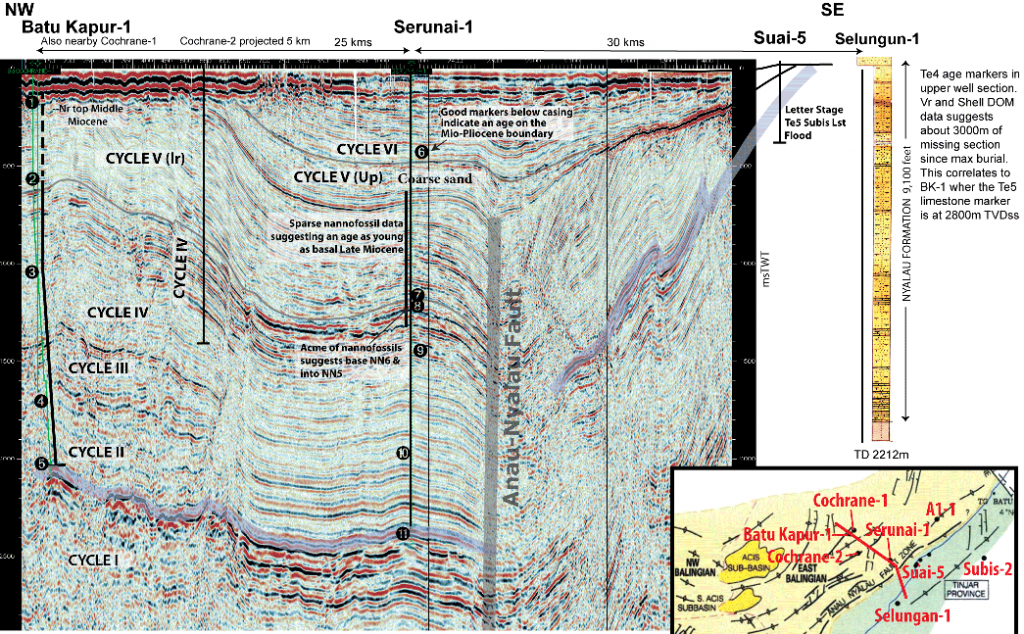Lunt, P., 2021. Tectono-stratigraphic framework of Luconia carbonates. SEPM Special publication, Cenozoic Isolated Carbonate Platforms – Focus Southeast Asia, doi:10.2110/sepmsp.114.08
It has long bothered me that leading structural geologists, carbonate sedimentologists and other specialists get such poor stratigraphic advice. This was the second of three papers for an SEPM Special Publication on “Cenozoic Isolated Carbonate Platforms – Focus Southeast Asia” to remedy some of these issues. The others were on carbonates in regional stratigraphy and the biological evolution of carbonates.
The carbonates of the Luconia Province are an excellent example of limestone deposition controlled by tectonism. These limestones, and the Terumbu Limestones deposited symmetrically across the Bunguran Trough, were initiated by base Cycle IV tectonism, and both strongly modified by tectonic activity at the base of Cycle V. These movements defined the Cycle boundaries. Unfortunately the Cycles have been mis-applied and mis-correlated since their definition (see my review with Mazlan Madon, 2017, and also this post), and this has undermined their primary importance as major boundaries in the tectonic and stratigraphic history of the region. These boundaries correlate to tectono-stratigraphic sequence boundaries in other areas as the are part of the same tectonic evolution (see this link).
The paper also shows that within Cycle V an abrupt and major event to the south uplifted the modern area of onshore Sarawak and this was the onset of termination of the Luconia limestones, as new clastics muddied the waters.
Geohistory analysis is a key part of this review as it places the history of the siliciclastic supply and carbonate accommodation space in a quantitative framework.
There are 16 Figures in this paper. Below is just one, showing the uplift of onshore Sarawak (Tinjar Province) dated as mid Late Miocene from the wells marked

References
Lunt, P., Madon, M.B.H., 2017. A review of the Sarawak Cycles: History and modern application. Geological Society Malaysia Bulletin 63, 77-101
Be First to Comment